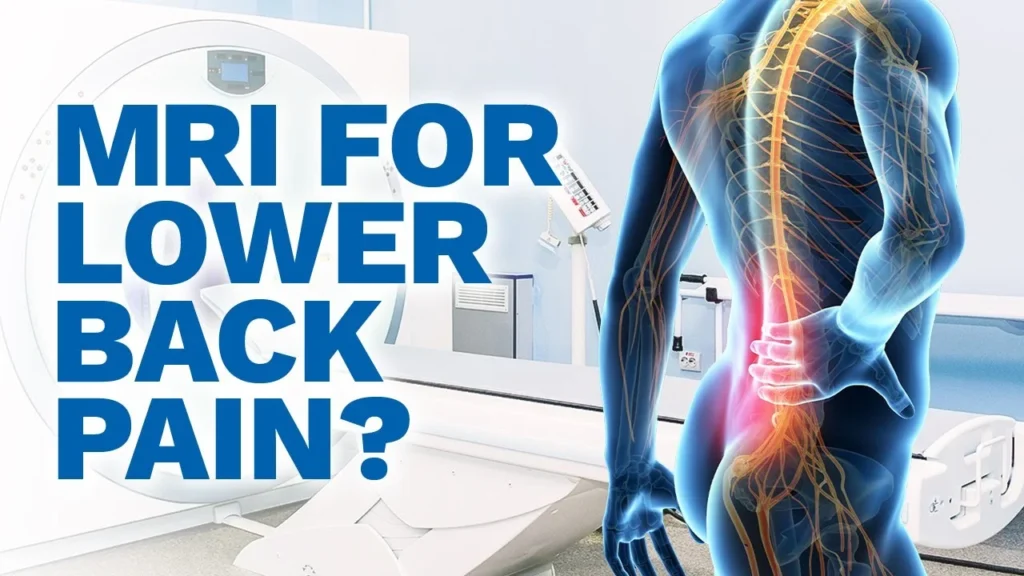MRI for Back Pain: Can It Help Diagnose the Root Cause?

The medical complaint of back pain affects millions of people across the world, making it a leading global medical issue. A variety of day-to-day activities become difficult for individuals with back pain, which presents as either continuous mild pain or sudden acute pain. People who need to locate the fundamental cause of their persistent back pain commonly use magnetic resonance imaging or MRI scans near me, as diagnostic medical imaging technology. The effectiveness of MRIs for detecting the primary causes of back pain remains unclear. MRIs work with specific functionality that needs assessment along with their benefits and limitations and appropriate utilisation conditions.
Understanding MRI and How It Works
The diagnostic system Magnetic Resonance Imaging (MRI) generates detailed human body pictures by combining strong magnetic fields and radio waves without requiring surgical interventions. MRI is a safer diagnostic imaging method than X-rays and CT scans since it operates without radiation, allowing it to be used for prolonged assessments and monitoring.
The spinal bones, discs, nerves and soft tissues become easy to detect with an MRI when physicians need to evaluate back discomfort. The technology helps doctors detect various abnormalities, which include cancers and infections, bone wear-down patterns, spinal canal narrowing, and disk tear cases. Although structural abnormalities become evident through MRI tests, physicians face challenges in linking those issues to particular pain sources.
Can MRI Identify the Root Cause of Back Pain?
Several variables affect how well an MRI can identify the underlying cause of back pain. Although it can offer insightful information, it is not always conclusive in identifying the causes of pain. This is the reason:
1. MRI Detects Structural Changes but Not Pain Levels
Although abnormalities such as disc degeneration or bulging discs can be shown on MRI images, discomfort is not always caused by these changes. According to studies, many patients without back discomfort also have disc problems that can be seen on an MRI. On the other hand, some people who experience excruciating pain could not show any noteworthy results on their scans.
2. Differentiating Between Normal Aging and Pathology
Medical professionals use MRI results to differentiate symptoms from pathological conditions from those naturally occurring with age-related changes. Ageing causes deterioration in the spinal structure. Two standard MRI scans near me results of little disc protrusions and mild arthritis can appear as normal findings per clinical tests. To determine their significance, a physician must analyse MRI findings against patient symptoms, physical examination, and medical background.
3. Recognising Inflammation and Nerve Compression
MRI is quite functional when identifying nerve compression brought on by disorders like sciatica, spinal stenosis, or ruptured discs. MRI results can support the diagnosis when nerve impingement is shown with weakness, numbness, or shooting pain down the legs.
4. MRI Can rule Out Serious Conditions
MRI is crucial for identifying catastrophic disorders such as spinal infections, tumours, fractures, or significant nerve damage, even though it may not always be able to identify the precise cause of typical back discomfort. An MRI can be a life-saving diagnostic procedure when these disorders are suspected.
When Does Back Pain Require an MRI?
An MRI is not always necessary for back discomfort. Conservative measures like rest, physical therapy, and pain management are enough to resolve most cases. An MRI is usually advised by doctors in the following circumstances:
- An assessment with MRI will explore underlying causes of back pain that persists beyond six weeks of proper medical care.
- An MRI serves as a tool to detect nerve injuries which develop from patient-reported numbness along with tingling sensations and paralysis and incontinence problems affecting bladder and bowel control.
- MRI scan near me evaluation serves postoperative purposes for patients who underwent back surgery since it detects unsatisfactory outcomes and potential complications.
- When suspecting spinal infections, tumours, or fractures, physicians must use MRI examinations for accurate diagnosis.
MRI Substitutes for The Diagnosis of Back Pain
Doctors may employ alternative techniques to diagnose back pain, as MRI is not always necessary, such as:
- X-rays: Helpful in identifying spinal misalignment, arthritis, and fractures.
- CT scans Give patients more precise pictures of their bones, but they also expose them to radiation.
- Electromyography (EMG): Assesses nerve function and aids in diagnosing back pain associated with nerves.
- Physical Examination: To identify the causes of pain, doctors evaluate posture, movement, and reaction to specific tests.
MRI and Personalised Treatment Plans
An MRI should be utilised as part of a thorough examination, even though it can offer valuable structural information. To develop a customised treatment plan, a physician will consider the results of an MRI, clinical symptoms, and medical history.
Conservative Measures Before Imaging
Before thinking about an MRI scan near me – https://www.carescan.com.au/mri-scan/ , conservative measures like rest, physical therapy, anti-inflammatory drugs, and lifestyle changes should usually be tried. Many back pain situations get better with these non-invasive techniques.
A Look at Surgical Considerations
If an MRI shows severe nerve compression or structural problems that need to be addressed, a spine specialist may suggest surgical procedures such as discectomy, spinal fusion, or decompression surgery. These operations aim to stabilise the spine, reduce nerve strain, and increase mobility. Surgery, however, ought to be reserved for extreme cases. Patients should look at non-surgical methods such as physical therapy, pain management, posture correction, and lifestyle changes before contemplating invasive surgery. Conservative measures can help many back pain cases, which lessens the need for surgery. The least invasive and most efficient recovery strategy is guaranteed by a comprehensive review by an expert.
Takeaway
MRI is not always the best technique to diagnose back discomfort, although it can be helpful. Since many of the abnormalities identified on MRI are frequent and may not always result in symptoms, even while it offers detailed images of the spine, it is not always possible to determine the precise source of pain. The initial treatment line for most people should be cautious measures and a comprehensive physical evaluation. Only severe symptoms, neurological involvement, or suspected serious disorders should be treated using MRI. The best action to determine whether an MRI is required is to consult a healthcare expert.






